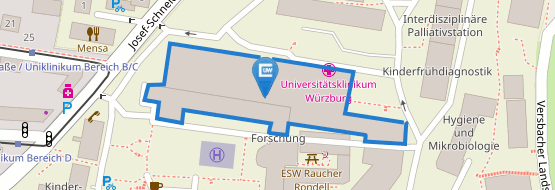A01 - Nieswandt
Analysis of the cellular regulation of platelet adhesion receptors in haemostasis and thrombosis
Summary
Platelet adhesion and aggregation at sites of vascular injury is essential for hemostasis but is also a central pathomechanism underlying ischemic cardiovascular diseases such as myocardial infarction or stroke. These processes are mediated by adhesive and activatory membrane glycoproteins that are tightly regulated in their activity and/or expression on the platelet surface. Besides glycoprotein (GP) Ib-V-IX, which mediates initial adhesion, GPVI has been identified as a central receptor in the early phase of thrombus formation. GPVI mediates cellular activation which is a prerequisite for firm adhesion and aggregation making it a promising target for antithrombotic therapy. In previous studies we could show that anti-GPVI antibodies induce the down-regulation of the receptor in circulating platelets and, consequently, long-term antithrombotic protection in mice. Experimental evidence suggests that this down-regulation can occur by the same two pathways previously described for GPIb-V-IX, namely internalization and ectodomain shedding but neither the underlying mechanisms nor the (patho-)physiological relevance of these processes is clear at present. The shedding of GPVI appears to be mediated by a member(s) of the a disintegrin and metalloproteinase (ADAM) family of metalloproteinases, most likely ADAM10. In our project we want to study the signaling pathways that induce internalization and/or ectodomain shedding of GPVI and GPIb-V-IX and identify the relevance of these mechanisms for the human system. For this, we study receptor regulation in mice with selective defects in the GPVI signaling cascade (e.g. PLC?2-/-, LAT-/-). Furthermore, we generate mouse lines that express human GPVI (wild-type or mutated) in their platelets in a GPVI knock out background. A second part of the project will focus on the generation of mice carrying a ADAM10 gene that is flanked by loxP sites that will then be crossed with mice expressing cre-recombinase under the interferon-inducible Mx promoter. Induction of cre in those mice will delete the ADAM10 gene in blood cells, including platelets. The newly generated mouse lines will be analysed for defects in platelet adhesion and aggregation in the context of thrombus formation and inflammation.

